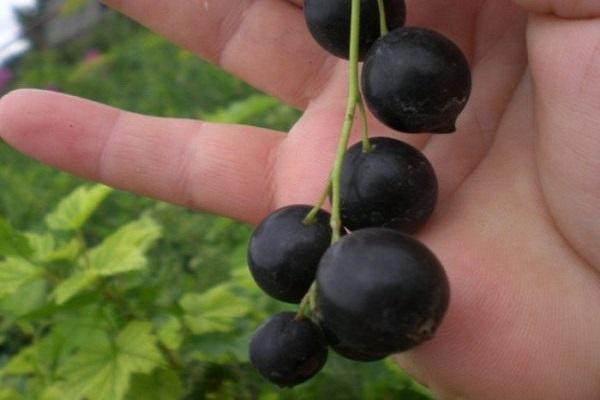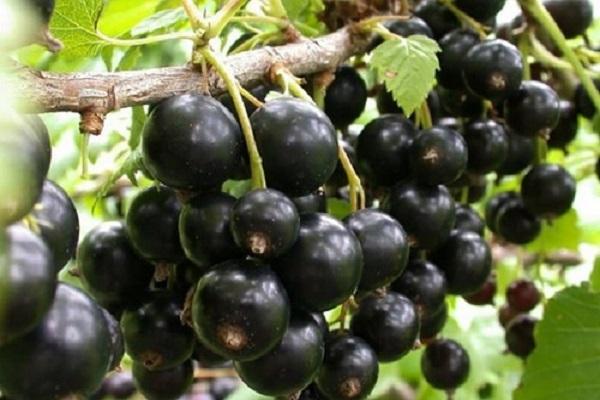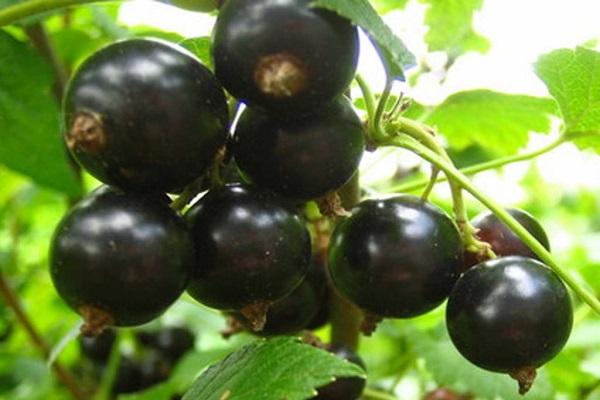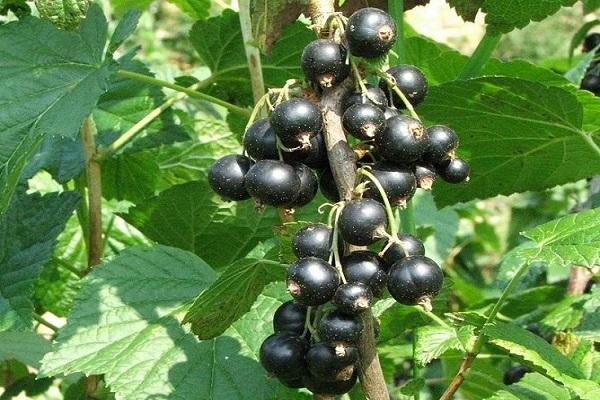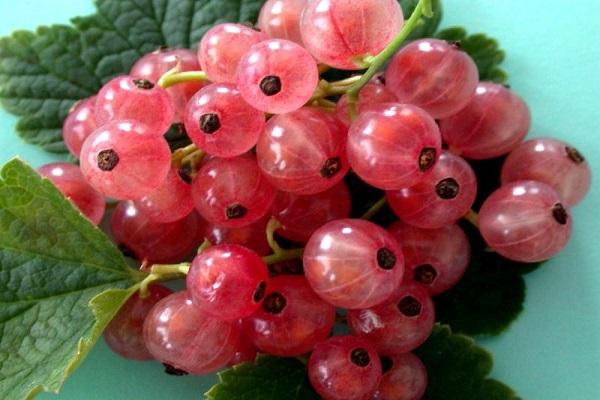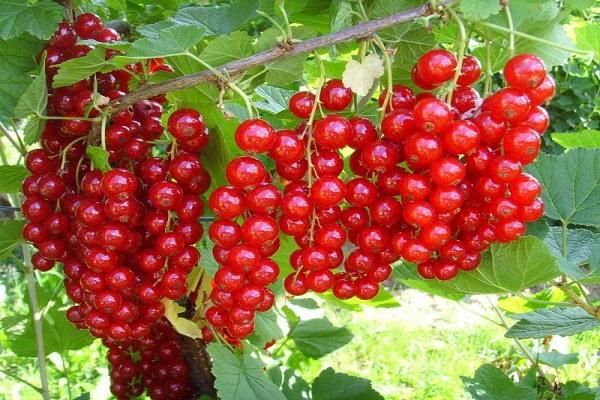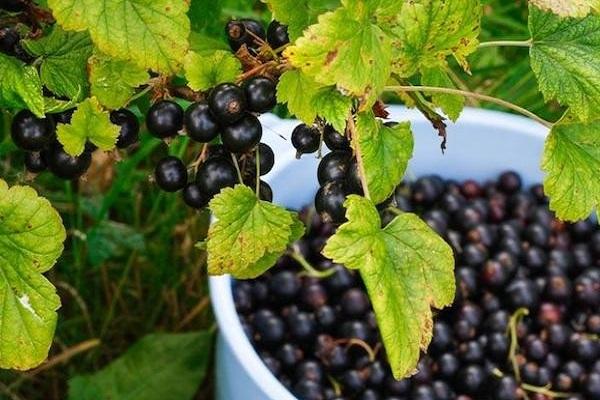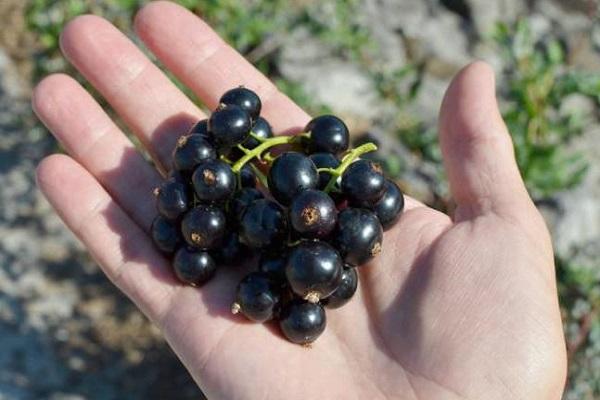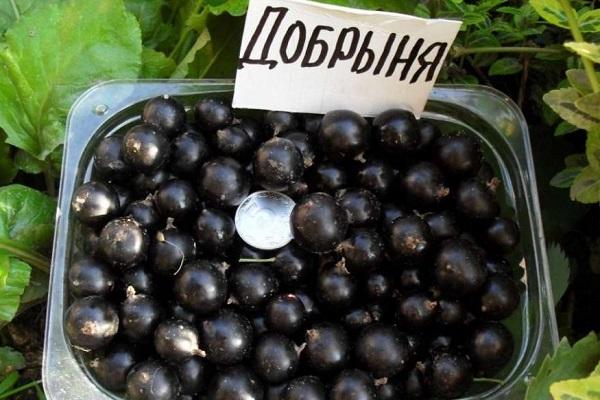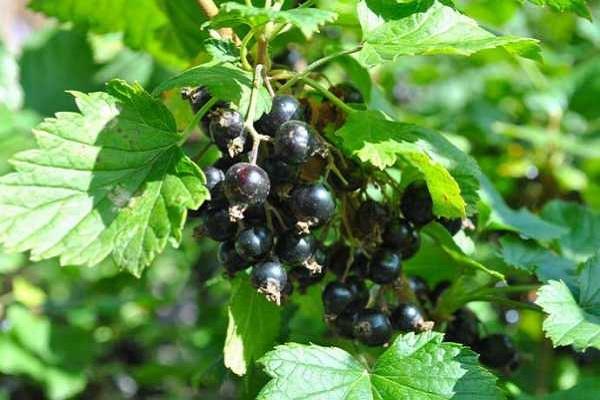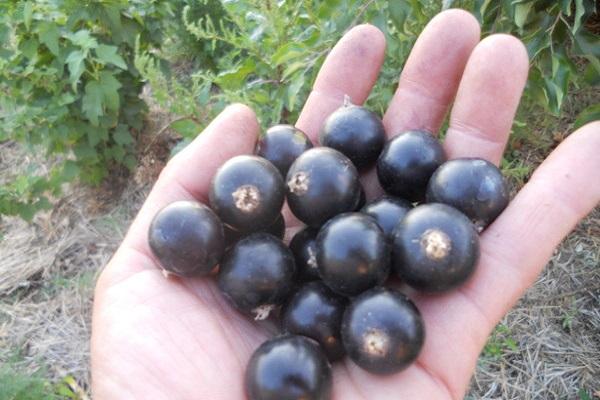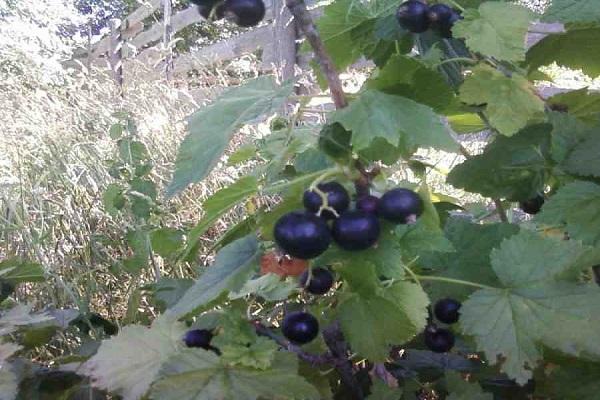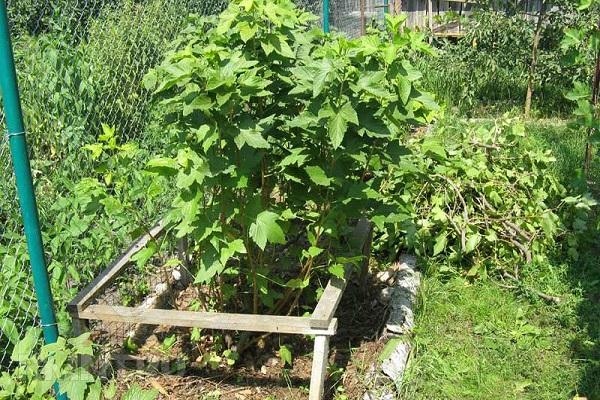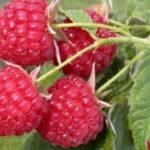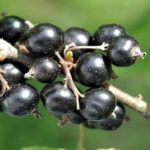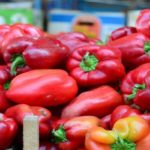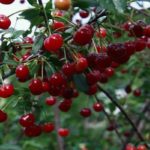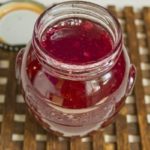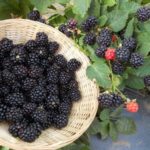Some blackcurrant varieties are specially bred for Siberia. Such shrubs adapt well to short, hot summers and do not die in frosty winters. In addition to black currants, you can plant red and white currants in your garden. Each variety has its own positive aspects and requires minimal care.
- Climatic characteristics of the region
- What criteria must a currant variety meet for Siberia?
- Recommended varieties for Siberia
- Pearl
- Gross
- Hercules
- Bagheera
- Treasure
- Ural beauty
- Crops with red fruits
- Dutch pink
- Chulkovskaya
- Jonker Van Tets
- Early sweet
- White-fruited varieties
- Minusinsk white
- Belaya Potapenko
- The sweetest varieties
- Triton
- Varieties resistant to diseases and pests
- Binar
- The best large-fruited varieties
- Vigorous
- Titania
- Selechenskaya-2
- Pygmy
- Dobrynya
- Early ripening varieties
- Lama
- Gift to Curiozu
- Nika
- Mid-season crops
- Rita
- Altayanka
- Late ripening varieties
- Mila
- Tips and tricks for planting and care
- How and when to plant
- We provide proper bush care
Climatic characteristics of the region
Siberia occupies a huge area - from the Ural Mountains to the Pacific Ocean. Such a vast region is characterized by climatic diversity. In the north there is a subarctic climate, in the center there is a continental climate, in the south there are hot Asian steppes.
Siberia is considered the coldest region on Earth. Winters here are long and very frosty. Spring comes late - the snow melts only in mid-April. In May the air warms up to 14 degrees Celsius. In the northern regions, spring warming begins in June.
Summer is hot, sunny, almost never rainy, but short. The average summer temperature is 20-25 degrees. Night frosts can last until mid-June, then retreat, and return by the end of August. Autumn in Siberia is swift, with a rapid transition from summer to winter. At the beginning of September, the air temperature can be equal to 14 degrees Celsius, and by the end of this month it sometimes snows. True, winter comes to Siberia in early November.
What criteria must a currant variety meet for Siberia?
The climate of Siberia is not suitable for growing berries. However, Russian breeders have developed new varieties of currants that can adapt to the conditions of dry, short summers and long, frosty winters. To successfully grow currants, you must also follow the tips for caring for this crop.
Criteria that a variety for Siberia must meet:
- frost resistance;
- ability to withstand sudden temperature fluctuations;
- excellent taste characteristics;
- resistance to fungal diseases and insect attacks;
- rapid ripening of berries;
- good yield.
Recommended varieties for Siberia
Varieties have been bred for this region that can withstand Siberian frosts well and quickly come to life in the spring. However, sudden spring frosts, although they do not affect the condition of the buds, can destroy half of the blooming flowers.
Pearl
It is also called Black Pearl. It was released in 1992. Currant bushes are of medium height (up to 1.3 meters). Several clusters with 5-8 berries grow on a branch. The weight of one berry is 2-3 grams. It is possible to collect 4 kilograms of harvest from a bush.
Gross
The best crop bred by Russian breeders. It bears fruit well, rarely gets sick, and does not die in cold weather. The culture is self-fertile, which is why it does not require pollinating insects. The bush is of medium height, spreading. The berries are sweet and sour, juicy, weighing 2.5 grams.
The crop begins to actively bear fruit only 3 years after planting. From one plant it is possible to collect 4 kilograms of harvest. The berries ripen in early July. It is advisable to insulate the bushes for the winter, although even without shelter they can easily tolerate thirty-degree frosts.
Hercules
The crop is winter-hardy, self-fertile, with a late ripening period. The bush is tall, with straight stems, not very dense. 8-12 berries appear on each cluster. The weight of one is 1.6-3.6 grams. The skin is black, slightly shiny, thin.
Bagheera
A hybrid crop bred from a Scandinavian and Belarusian variety in 1994. It tolerates frosty winters and hot summers equally well.The bushes are dense and spreading, up to 2 meters long. Each brush has 5-8 berries. The harvest ripens in July. It is possible to collect 4 kilograms of fruit from a bush.
Treasure
The variety was bred specifically for Siberia in 1997. The bush is low (up to 1.5 meters). The berries are oval, medium in size, weighing 2 grams. 3.5 kilograms of crop are harvested from the bush.
Ural beauty
Red currant, bred by Ural breeders. The bush is compact, not very tall (up to 1.2 meters). The berries (about 20 pieces) ripen on clusters up to 7 centimeters long. The mass of one is 1.7 grams. Productivity - 3.5-9.5 kilograms per plant.
Crops with red fruits
Wild varieties of red currant can be found in Siberian forests. However, these bushes did not take root in summer cottages for a long time. All red currant varieties planted in Siberia are hybrid. The crop, adapted to the climatic conditions of this region, was obtained by crossing wild frost-resistant and southern productive varieties.
Dutch pink
A well-known variety in Western Europe. The bush is compact, up to 1.5 meters high. This is a self-fertile crop with pinkish berries that have a transparent thin skin. The weight of one is 1.5-2.5 grams. Up to 15 berries can appear on one brush. From each bush it is possible to collect up to 9 kilograms of harvest.
Chulkovskaya
An ancient self-fertile variety that ripens well in all Russian regions. The bush is compact, of medium height. One berry cluster produces 6-8 fruits. The weight of one small berry is 0.7 grams. The culture tolerates frosty winters and summer droughts well. The berries are red, transparent, but slightly sour. They are grown mainly for preservation.
Jonker Van Tets
A Dutch self-pollinating variety that appeared in Russia in 1992. The bush is tall, with long and straight stems. Up to 10 berries appear on each brush. The mass of one is 0.7-1.5 grams. The fruits have a sweet, slightly sour taste, they are juicy, they are eaten fresh and canned for the winter. It is possible to pick up to 7 kilograms of berries from one plant.
Early sweet
Self-fertile crop with early fruiting and tasty sweetish berries. The bush is low, with a dense crown. The berries are red, transparent, small, the weight of one is 0.5 grams. Used for preservation and fresh consumption.
White-fruited varieties
Unlike red and black, white currants are much sweeter and tastier. However, this species is not very popular among summer residents. Although the white transparent berries make excellent jam or preserves. To obtain jelly, you don’t even need to add gelatin to the syrup, because the fruits have so much pectin. Aromatic wine and liqueurs are made from white currant berries.
Minusinsk white
Variety released in 2005. The bushes are low and compact. The berries are medium, the weight of one is 1.5 grams. Productivity - 6.5 kilograms per plant. The berries are sweet, slightly sour and have large seeds.
Belaya Potapenko
The variety was bred for the Siberian region in 1991. Bush of medium height (up to 1.5 meters), slightly spreading. Brushes are 5 centimeters long. The berries are small (weighing 0.5 grams), but sweet. Up to 2 kilograms of harvest are harvested from one bush.
The sweetest varieties
Among the huge variety of blackcurrants, you can choose the sweetest varieties. The berries of such crops contain 10-12 percent sugar. Due to their excellent taste characteristics, sweet varieties of currants are grown for consumption or preservation. Popular varieties: Bagheera, Triton, Green Haze, Nina, Selechenskaya-2.
Triton
A variety bred in Sweden, perfectly adapted to frosty winters. The bush is tall, but not spreading. On one brush, from 7 to 12 centimeters long, 6-13 berries grow. The mass of one is 0.9 grams. A self-fertile crop begins to bear fruit only 3 years after planting. 3.5 kilograms of crop are harvested from the bush.
Varieties resistant to diseases and pests
Powdery mildew and leaf spot (septoria and anthracnose) are considered common diseases of currants. Under conditions favorable for the development of diseases, you can lose half, and sometimes the entire crop. Breeders have developed new varieties of blackcurrant with excellent immunity. Such crops tolerate harsh winters well, quickly revive and bear fruit, and are not afraid of the main enemies of the shrub - bud mites and gall aphids. Popular varieties: Binar, Selechenskaya, Titania.
Binar
Winter-hardy crop with medium-sized berries (up to 1.4 grams). The bush is tall and compact. On each brush, 4-8 centimeters long, 5-7 berries grow. The crop rarely suffers from powdery mildew, anthracnose, and is not affected by bud mites.
The best large-fruited varieties
Many summer residents prefer to grow large-fruited currants. The berries of the best varieties of large black currants are large, juicy, sweet with a slight sourness. The weight of one is from 2 to 8 grams.
Vigorous
The culture was bred by breeders specifically for cultivation in Western and Eastern Siberia.This is a hybrid crop, perfectly adapted to frosty winters and short summers. The bush of the Vigorous variety is spreading, low (up to 1.5 meters in length). From 6 to 12 large berries grow on one thin brush. The harvest can be harvested at the end of July and until mid-August.
Titania
The variety, bred by Swedish breeders, appeared in Russia in the 90s. The bush is raised, with straight long stems. Height - 1.5 meters. Begins to bear fruit in July. Each cluster grows up to 20 berries. The weight of one is 4 grams.
Selechenskaya-2
The bush is compact, with straight shoots, 1.9 meters long. Each cluster produces up to 14 berries, one weighing 4-6 grams. The fruits are large, sweet, aromatic, juicy.
Pygmy
The variety was released only in 1999. The crown of the bush is not spreading; the shoots grow upward and reach a length of almost two meters. Fruiting begins at the end of June and lasts until mid-July. This is a self-pollinating crop. Each cluster produces 10-12 fruits. The berries are large, sweet, one weight is 5-7 grams. From each bush it is possible to collect 5.5 kilograms of harvest.
Dobrynya
The variety appeared only in 2004. The bushes are erect and low. 7-10 berries appear on each brush. The weight of one is 5 grams. 2 kilograms of crop are harvested from the bush.
Early ripening varieties
Early varieties ripen in late June and early July. These varieties quickly come to life after frost and bloom in mid-May. In the event of spring frosts, up to 50 percent of the flowers die.
Lama
The variety has been known since 1974. The bush is dense, compact, tall. The berries are medium in size, weighing one - 1.1-2.4 grams. Up to 2.5 kilograms of crop are harvested from the bush.
Gift to Curiozu
An early ripening variety obtained in 2004.The bush has low, straight stems. The berries are large (weighing 1.9-3.6 grams), sweet and sour, with a small number of seeds. This self-fertile crop bears fruit well and rarely gets sick.
Nika
An early variety with a medium-sized bush. Crown density is average. Berry clusters are short (up to 4 centimeters). The berries are large, weighing 2-4 grams. Self-fertile culture. Tolerates frosty winters and summer droughts well.
Mid-season crops
Following the early currants, mid-season varieties ripen. The fruiting period is from mid-July to mid-August. The berries are eaten fresh or canned for the winter.
Rita
A self-fertile variety bred specifically for Siberia. The bush is tall, with straight long stems and dense foliage. The brushes are 6.5 centimeters long, each growing up to 7 berries. The weight of one berry is 2-4 grams.
Altayanka
The shrub is semi-spreading and medium-sized. The berries are medium in size (weighing 1.1-1.6 grams). From one plant it is possible to collect 3.8 kilograms of harvest.
Late ripening varieties
Late varieties ripen in August and are able to bear fruit until mid-September. The plants are winter-hardy, have pleasant-tasting, sweet-sour berries. True, the September variety, although it bears fruit until the first frost, has sour fruits. The berries of this currant are used for preservation. There are other varieties with late ripening: Mila, Harmony.
Mila
A distinctive feature of this variety is its self-fertility and large berries. The bushes are low (up to 1 meter), spreading. The weight of one berry is 2.5-4.5 grams. You can harvest 3.5 kilograms of crop from a bush.
Tips and tricks for planting and care
Black currants can take root in any soil, but it is advisable to fertilize the soil once a year with organic matter and minerals. The culture does not like acidic and swampy soil. If the soil is too clayey, you can add a little sand, compost, superphosphate and potassium sulfate. Soil acidity is reduced with lime, wood ash or dolomite flour.
How and when to plant
It is advisable to plant currants in a sunny place, in the southwestern side of the site. The bushes of this crop tolerate lightly shaded places well, but in full shade they begin to become very sick and bear fruit poorly.
Young stems can be planted in the ground in spring (late April) or early September (3 weeks before the first frost). First, you need to prepare a place for planting for the seedling. A small hole is dug in the ground, 50 centimeters deep. The dug up soil is mixed with rotted compost (a bucket) and mineral supplements (50 grams of superphosphate and potassium sulfate each).
It is better to buy a seedling in a special nursery. Young plants should be no more than one year old and 40 centimeters tall. There should be buds on the stems. Seedlings should have healthy roots 20 centimeters long. Before planting, the roots of the bush are placed for a day in Kornevin solution (to stimulate growth).
The seedling is immersed on fertilized soil at an angle and covered with the remaining soil. The soil is compacted and watered with 8 liters of water. The ground around the bush is mulched with sawdust.
We provide proper bush care
With good care, the bushes will bear fruit well and rarely get sick. During the period of flowering and the formation of ovaries in the dry season, it is advisable to water the shrubs. This technique will almost double the yield.You need to pour up to 20 liters of water under one bush.
Every year in the fall, after leaf fall, pruning is carried out. The branches are shortened and thinned out. In the spring, before the buds open, remove dry and diseased shoots. Every year, several old branches are completely cut off, leaving annual or biennial ones. By cutting off old stems and leaving young ones, the bush is rejuvenated.
When the flowering period comes, gardeners do not need to worry about pollinating insects. After all, most of the new varieties are self-fertile. Currants bloom in mid-May and are often subject to spring frosts, causing half of the crop to die.
Ripens, depending on the variety, from June to August. The difference in ripening time is two weeks. The berries are collected as soon as they are ripe.
To prevent diseases, bushes are sprayed with fungicides, copper sulfate solution, and 8% urea. To control pests, colloidal sulfur and garlic tincture are used. For the winter, the bushes are bent to the ground and covered with agrofibre.

